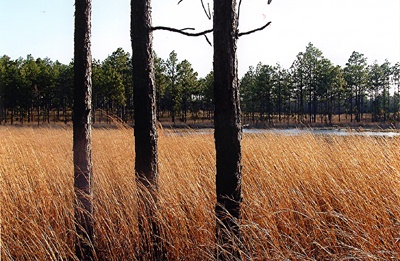All Nonfiction
- Bullying
- Books
- Academic
- Author Interviews
- Celebrity interviews
- College Articles
- College Essays
- Educator of the Year
- Heroes
- Interviews
- Memoir
- Personal Experience
- Sports
- Travel & Culture
All Opinions
- Bullying
- Current Events / Politics
- Discrimination
- Drugs / Alcohol / Smoking
- Entertainment / Celebrities
- Environment
- Love / Relationships
- Movies / Music / TV
- Pop Culture / Trends
- School / College
- Social Issues / Civics
- Spirituality / Religion
- Sports / Hobbies
All Hot Topics
- Bullying
- Community Service
- Environment
- Health
- Letters to the Editor
- Pride & Prejudice
- What Matters
- Back
Summer Guide
- Program Links
- Program Reviews
- Back
College Guide
- College Links
- College Reviews
- College Essays
- College Articles
- Back
Why Salt Marshes Need to Be Saved
Across the world, salt marshes are known to have a diverse community of wildlife and plants that provides an ecosystem for many organisms. A typical salt marsh is filled with finfish, algae, abundant grass, and a wide variety of insects, all living off of each other in harmony. However, this is quickly changing. With new threats appearing such as storm destruction, pollution (oil spills, plastic dumps etc.), urbanization, agricultural runoff, and overall destabilization of the ecosystem, salt marshes are rapidly dying off. Salt marshes have profound benefits for humanity including storm protection, recreational and educational purposes, and fertile land to grow crops on. It’s easy to see just how important they actually are, which is why the public should start caring more about the destruction of these productive ecosystems, and taking steps to address this issue.
The sheer biodiversity of salt marshes is ginormous, and the ways all the different species interact to protect the mainland is fascinating. When plants in this ecosystem die, they die form a spongy, absorbent layer of soil, so that when a storm strikes, it takes in a majority of the water before it hits the mainland. On top of this, the ones that are standing upright form a barrier that slows the velocity of incoming major tides, thereby saving coastal cities from massive destruction. Additionally, the plants serve as a filter that take out harmful substances in the ocean before they reach further inland. This is done by way of mud pits, which hold salt as the water evaporates, keeping the harmful sodium from traveling any further. Unfortunately, rising sea levels due to global warming (caused directly by humans) are overwhelming the marshes, bringing about irreversible damage and leaving other inland ecosystems open for destruction. If the decimation of these cherished ecosystems is allowed to continue and the salt marshes disappear, seaside communities across the globe will be hit first when massive storms or tsunamis come in, bringing about unprecedented devastation to the population. Salt marshes provide storm protection to a significant amount of human populations, and the overall annihilation of these ecosystems leaves these seaside populations open to devastating storms and rising tides.
Continuing, there are many recreational, educational, and agricultural benefits that come from the salt marshes. To explain, activities such as canoeing, bird watching, or fishing are available. When it comes to educational value, salt marshes are perfect examples of how an ecosystem functions with a food web, how different species interact with each other and how humans can alter the environment to make it work in favor of them, without harming it. One example of this is mosquito ditches, which helps limit the mosquito population and protects crops without loading them with dangerous pesticides. However, humans have turned some of these positives into negatives by being irrosponisble with chemical and waste deposites, allowing them to enter into salt marshes. For instance, agricultural runoff filled with fertilizer (the nitrogen it contains causes spikes in algae growth, which in turn distorts the food web), herbicides (kills plants), invasive species, and manure that contains the deadly bacteria E. Coli are entering the fragile ecosystem. In addition to this, overfishing, which causes the mosquito population to increase, causes dangerous diseases to spread to both the animal and human population more easily. Along with this, oil spills are being swept in by the tides, along with plastic, both of which kills animals that consume it and disrupts plant growth. Concluding, many activities and benefits that stem from the marshes are under siege from threats such as pollution, rising sea levels and increase in mosquito population.
From diverse organisms, to beautiful scenery, storm protection and agricultural land, it’s of our best interest to defend these ecosystems. Some methods to achieve this would be by honing in on preventing pollution, prioritizing funding on agencies that helps restore them back to their original setting, enacting harsher laws against overfishing, and overall working towards reaching a public consensus that the salt marshes are vital to the preservation of seaward metropolitan areas. With violent hurricanes and tsunamis on the rise recently, this is has now become a more relevant issue than ever. Now is the time for humanity to take responsibility for the planet and to realize that "We are not apart from nature, we are a part of nature"-Luminita. It's time to counteract the damage we have already done to the very ecosystems that protect us. To close, salt marshes have immense benefits, and have productive, natural assets to humanity and need to be saved, before it’s too late.

Similar Articles
JOIN THE DISCUSSION
This article has 0 comments.
